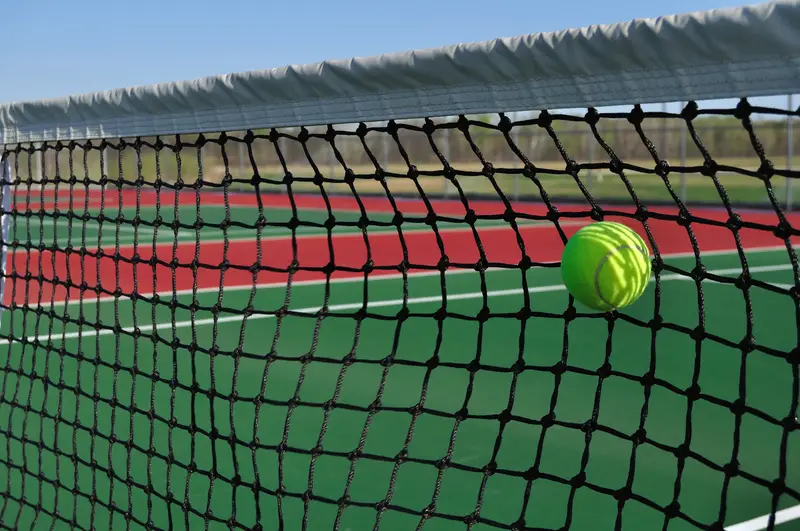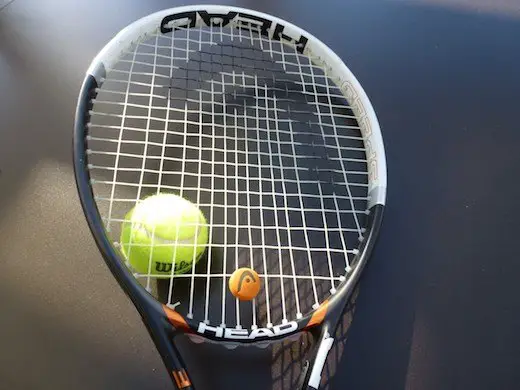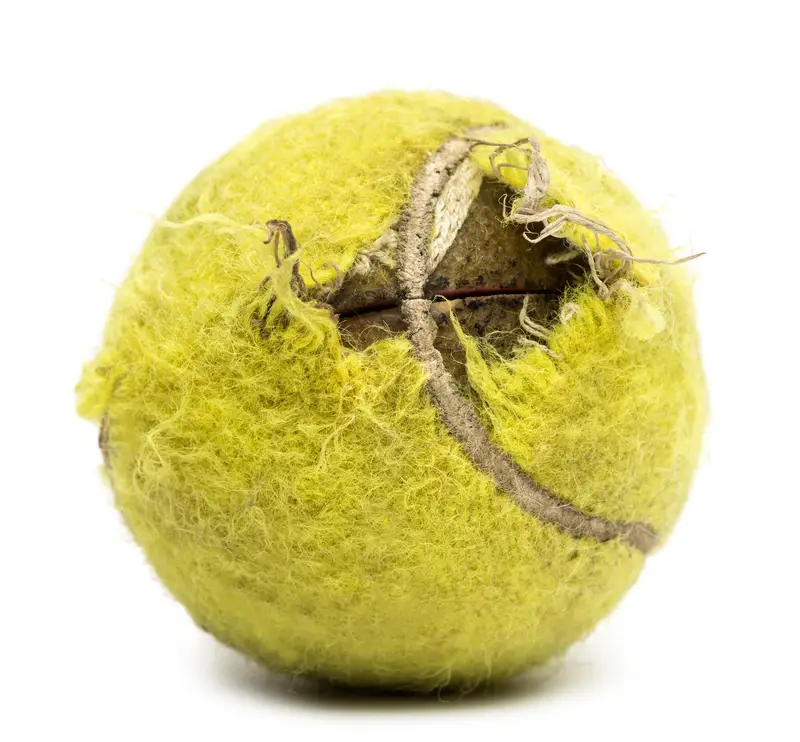- A player misses both their first and second serves
- Impact – loses the point without the opponent needing to hit a shot
- Frequency – not seen in volume with professional players
Your Guide
 Gavin Davison
Gavin Davison
Hitting a double fault is one of the worst feelings in tennis – trust me.
This occurs when you:
- Step up to the Line
- Miss Your First Serve, and
- Then Miss Your Second Serve Too

Of course, nobody wants to hit double faults, as it gives the opponent a COMPLETELY FREE POINT.
Now, at lower levels of tennis, double faults are actually fairly common.
That’s because players are still working on their games and improving, especially concerning the serve.
However, in professional tennis, double faults don’t tend to happen with extreme regularity.
They do, of course, occur in matches though.
Take guys like Alexander Zverev as an example; he can often get the yips on his serve and throw in a BUNCH OF DOUBLE FAULTS.
Getting these ‘yips’ was also a major problem for Guillermo Coria, a talented clay courter who struggled with double faults for years.
As you can imagine, double faults can be hugely detrimental to a players performance and confidence.
But why do they happen, and is there ANY PARTICULAR SITUATION in which they become more frequent?
Read on to find out.
In what instances might a player hit a double fault?
As I’ve stressed above, double faults do happen in the professional game (check out this article to improve your doubles game).
Sure, they’re not AS FREQUENT as they might be in amateur tennis, but they have the same detrimental impact.
Why do they occur? I’ve discussed this below.
I) Trying to Go For Too Much
For a double fault to happen, the server MUST MISS BOTH their first and second serves.
Now, missing a first serve happens all the time in tennis. (check out my guide how to serve better in tennis).
But missing the second then hands the point to the opponent.
In my experience, and from my observations over the years, one of the MAIN CAUSES of double faults is when someone tries to go for too much.
This means they are trying to hit the second serve too hard or go too close to the lines.
Both of these results in a RISKIER and LESS CONSISTENT SERVE.
However, this is sometimes done as a reactive measure when playing against phenomenal returners of the ball.
Nowadays, Novak Djokovic has THIS EFFECT on his opponents in their service games.
But besides the great Djokovic, Andre Agassi would have the same impact on guys he played against.
He was SO DANGEROUS off the return that guys would try and hit a big second serve TO AVOID Agassi taking immediate control over the point.
II) Huge Pressure From the Returner
This brings us to the point I’ve touched upon above.
When you are serving against a great returner of the ball, it’s normal to feel under more pressure and believe that YOU NEED to hit a better second serve.
This in itself will cause a player to hit far more double faults than they might usually hit during a match.
But it’s not just consistent returners like Djokovic, and previously Agassi, that have this effect.
It’s also very apparent when guys play against BIG HITTERS of the ball.
These days, guys like Berrettini, Shapovalov, Sinner, Rublev, and many others can absolutely unload on the ball.
And this is certainly true on the return of serve.
Imagine trying to put the second serve in play when you’ve got guys like that down the OTHER END.
I can only guess at the pressure it puts on the quality of the second serve.
III) General Match Pressure
Tennis is an extremely psychological sport.
In fact, many psychologists say that 90% of tennis is mental.
While I don’t know about that, the psychology of the game DEFINITELY HAS AN IMPACT on player performance.
And in the case of double faults, when a match gets tight, these can start to fly in more than you might expect.
Of course, when serving, it is ALL ON YOU.
And if the match is at a pivotal point:
- Your Arm Can Get Heavy
- Your Technique Might Start to Wobble, and
- You May Have a Harder Time Hitting a Quality Second Serve
All of this is PERFECTLY NORMAL I’d like to add.
But regardless, match tension and pressure inevitably start to alter the double fault numbers.
How to avoid hitting too many double faults
At the end of the day, we all want to avoid hitting double faults in matches.
While it might not always be possible to HIT ZERO in a match, we can certainly reduce them.
Here are my top tips on doing exactly that:
1) Focus On Making the First Serve
This may seem overly obvious, but players don’t tend to think about it.
To hit a double fault, I’d LIKE TO EMPHASIZE that you need to miss both serves!
So rather than getting to the pressure situation where you must make the second, why not simply make the first?
To do this, stop trying to hit the fluff off the ball and add a little movement to it.
You could also start to HIT MORE BODY SERVES rather than trying to paint the lines down the tee or wide.
2) Add More Spin to the Second
By this, I don’t mean slow down your racket head speed and push the ball.
That’s a common mistake that players make for second serves.
Your racket head speed should still be rapid, but now you should try and add some slice or even topspin to the ball.
Doing this slows down the ball in the air, but IT GETS THE BALL deviating once it hits the surface, making it tougher for your opponent to hit.
3) Don’t Worry About Your Opponent
Speaking of your opponent, try not to pay any attention to their position, abilities, or anything else for that matter.
The serve is ALL ON YOU and that’s how things should stay.
So even if they are a great returner, don’t let that put you off going for your favorite serve, even if that plays to their strengths.
Also, don’t think too much about them hitting A CLEAN WINNER on the return. If they do that, too good.
But at least make them replicate this to win points rather than handing the point over with a double fault.
Has this article helped you understand double faults?
Are you now more knowledgeable on why they occur and how to avoid them? Jump into the comments and share your thoughts.


